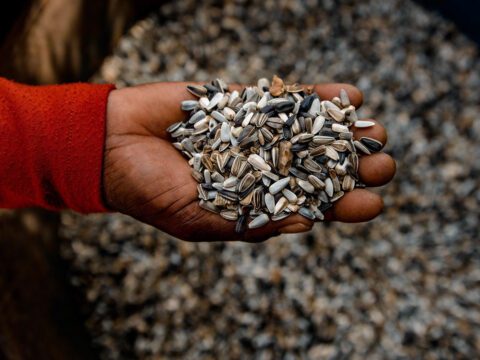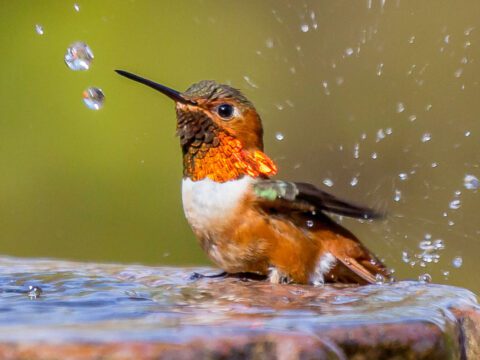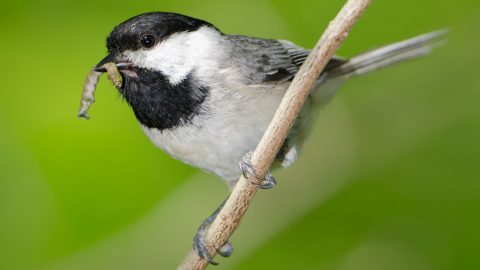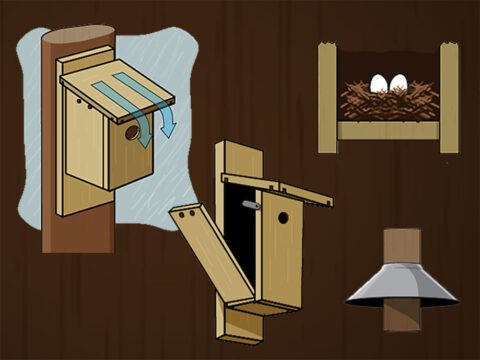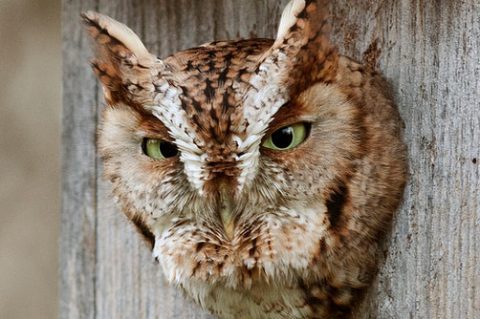How to Provide Seeds and Shelter for Backyard Birds
November 20, 2021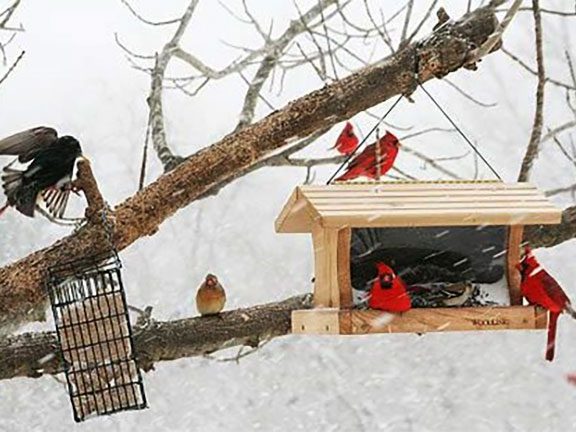
Like all animals, birds have 3 basic requirements for living: food, water, and shelter. Whether you have a large yard or a small urban area, you can make your space more bird-friendly by making sure you have these three elements.
Step 1: Evaluate Your Real Estate
Drawing or sketching a map of your property is a helpful first step. If you outline your property, home, vegetation, feeders, etc., you’ll have a visual starting point to help you plan your bird-friendly habitat.
Related Stories
If you live in a more urban setting, you can also create a spot to attract and help birds. Birds even visit high-rise balconies if food is provided. Check out the Cornell Lab’s Celebrate Urban Birds project for information on attracting birds to city yards and urban balconies.
Step 2: Think Variety
A diversity of plants will offer a diversity of food in the form of flower buds, fruit, seeds, nectar, sap, and associated insects. Plants also provide nest sites, nest material, and protected hiding places. The larger the variety of plants you grow, the more kinds of birds your yard will attract.
You can also use plants to build up structural diversity. Many birds prefer habitat that has a mix of vegetation at varying heights, like trees, shrubs, and ground cover. To create ideal habitat, place low-growing vegetation next to a thicket of shrubs and taller trees. Not only do birds love the variety of plants, the contiguous vegetation provides excellent cover and allows for safer movement.
Select locally native plants appropriate for the lighting and soil conditions of your property. Plants native to your region and locality are more likely to thrive without pesticides or watering, plus they offer the foods best suited to the native birds of your area.
To keep the birds coming back for more year-round, select a variety of plants that will produce foods in different seasons. For winter residents and migrants that return early in spring, plants that hold their fruits throughout the winter (“winter-persistent” plants) are a vital food source.
And you don’t need a yard to provide food and shelter for your backyard birds. Bird feeders and bird baths are a great way to help birds and can be set up almost anywhere. Check out the Cornell Lab’s various resources, like the articles listed in the “related stories” list on this page; and check out these helpful articles from Project Feeder Watch:
Step 3: Give Them Shelter
Shelter can take many forms, from trees and bushes to fancifully painted bird houses.
Dense thicketed areas provide places where birds can nest, perch, and escape from predators. So, if you have outdoor space, plant shrubs, a hedge, or vines to trail up fence lines to create an area of thick, wild growth that imitates the natural environment. And consider these tips:
- Dead Wood’s Good: Leave dead limbs and trees in place if it’s safe to do so. Insects that live in decaying wood are an important food source for woodpeckers, chickadees, and nuthatches. Cavity-nesting birds such as bluebirds and many woodpeckers need old, hollow trees to nest in. To make a dead tree prettier, consider planting native vines, such as Virginia creeper, to disguise its trunk.
- Build a Brush Pile: Recycle dead branches to start a brush pile for your ground-dwelling birds, such as sparrows and towhees. It gives them hiding places and some protection from rain, snow, and wind. Start with thicker branches and put thinner ones over the top. Add your old Christmas tree if you have one.
- Leave a Mess: If you don’t tidy up your yard and flowerbeds in fall, birds will love you for it. If you grow annuals, especially daisy relatives such as purple coneflowers, black-eyed susans, and sunflowers, leave the dead seed heads on them when they fade—goldfinches, redpolls, and other seedeaters will feast on the seeds. Instead of bagging up fallen leaves for disposal, rake them under your shrubs to act as mulch. They’ll harbor insects that ground-dwelling birds will find, too. And, come spring, those dead leaves, grasses, and plant stems will be a treasure for birds searching for nest material in your yard.
Providing nest and roost boxes are also a great way of providing shelter. Birds use these recourses for nesting, keeping warm during the winter, and as temporary shelters to stay safe during storms. Learn more:

All About Birds
is a free resource
Available for everyone,
funded by donors like you
American Kestrel by Blair Dudeck / Macaulay Library
